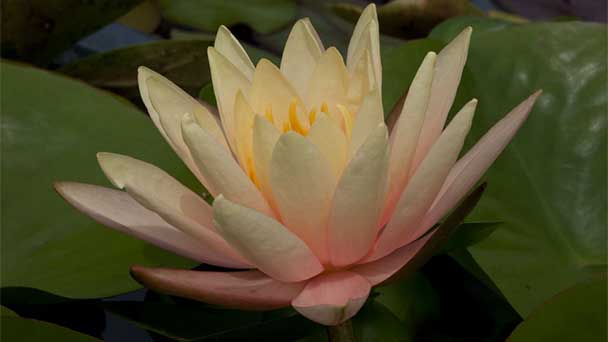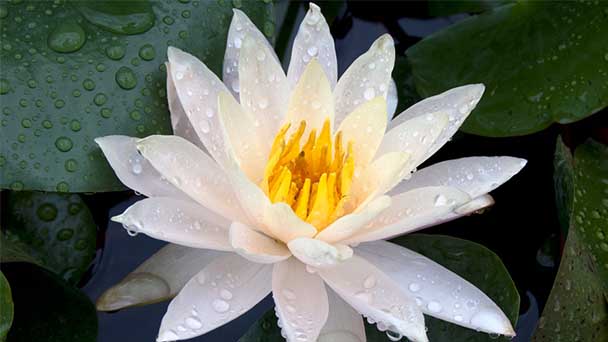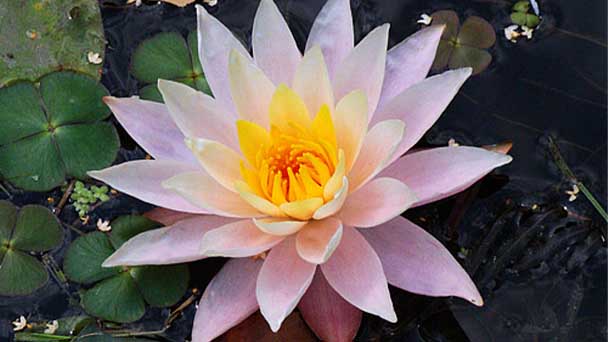Peace Lily Profile
Written by Joy
Oct 29 2021

Peace Lily is a perennial aquatic herb; Rhizome hypertrophy. Leaf type 2, floating leaves rounded or ovate, base curved, cordate or arrow-shaped, often without water leaves; Submerged leaves are thin and fragile. Beautiful in shape, floating above or above water; Sepals 4, subfree. Petals multilobed, carpels annular, appressed and semi-submerged in fleshy cup-shaped receptacles, and partially united at lower, upper extended into style, stigma concave into stigma disc, ovule inverted, pendulous on ovary wall. Berry spongy, irregularly dehiscent, subsurface ripe. The seeds are hard and encased in a gelatinous substance.
Peace Lily morphological characteristicsPeace Lily growth habit and growing environment and distributionPeace Lily efficacy and rolePeace Lily cultivation
Peace Lily morphological characteristics
Peace lilies have been aquatic herbs for many years. The rhizome is short and thick. Leaves are papery, horseshoe-shaped, green, with brown spots on both front and back of the primary leaves, with faded spots on the front of the adult leaves, but still with smooth brown spots on the back. It has a V-shaped lobes cleft, base deeply curved, approximately 1/3 of leaf length, lobes acute, slightly spreading or slightly overlapping, entire. The leaf diameter is 22×22 cm. Petiole reddish-brown, attached with fuzz.Peace Lily growth habit and growing environment and distribution
Peace Lily likes sunlight and good ventilation, so tropical and hardy water lilies that bloom during the day close their flowers at night and open again in the morning. Ponds, shaded by trees on the shore, bloom but grow weakly. The soil quality requirements are not strict, pH value 7.5-8, can be normal growth, the most suitable water depth 25-30 cm, the deepest should not exceed 80 cm. It prefers loam rich in organic matter. Leaves germinate from March to April, blossom in succession from May to August, and each flower blooms for 2-5 days. The flower firmed after. The stems and leaves wither in October to November. It reappeared in the spring of the following year. It is suitable for cultivation in various small, medium and large ponds.Peace Lily efficacy and role
According to the analysis of water lily's nutritional composition, the results show that water lily is rich in 17 kinds of amino acids, and the water lily protein belongs to the high quality protein. The results also showed that water lilies contain rich VC, flavonoid glycosides and trace element zinc, and the combination of the two has a strong function of discharging lead. Animal acute toxicity test micronucleus test and sperm distortion test all suggest hat water lily is a safe and reliable substance without any toxic and side effects. Water lily pollen is rich in nutrition, with the characteristics of completeness, balance, concentration, etc. It is a natural nutrient source with the prospect of exploitation and utilization. Peace Lily - Most Common House PlantPeace Lily cultivation
A bottomless flower pot with a height of about 50 centimeters and a diameter as large as possible is selected for planting. The well-mixed nutrient soil is placed in the pot, and the depth of filling is controlled within 30-40 centimeters, which is convenient for storing the water. The well-grown propagator should be buried in the center of the flower tank, and the depth should be slightly exposed to the top bud. After planting, add water but do not fill, with soil layer 2-3 cm above the best, easy to heat up, to ensure survival rate. Gradually increase the water level as the plant grows.Read Next:
Best 20 Air Purifying House Plants Improve Your Health
Latest Updated
- Benefits of Bugleweed - 7 Science-backed Health Benefits
- Bugleweed Dangers & Side Effects - Is It Poisonous?
- How to Plant Evergreen Trees - What You Should Know
- When to Plant Evergreens - Grow Guide for Evergreen Trees
- 12 Wonderful Evergreen Shrubs for Your Garden
- 12 Popular Evergreen Plants with Pictures for Beginners
- When And How To Prune A Lilac Bush Like a Pro
- How to Grow & Care for Lilac Vine (Hardenbergia Violacea)
- Japanese Lilac Tree (Syringa Reticulata) Care & Propagation Guide
- Shumard Oak Pros and Cons - What to Know
Popular Articles
- Winter maintenance of Antirrhinum Majus
- How to Grow Terminalia Mantaly Tree
- How to Grow and Care for Crossostephium Chinense
- How to grow Antirrhinum Majus in spring
- Peristeria Elata (Dove Orchid) Profile: Info & Care Guide
- Underwatered Snake Plant (Sansevieria Trifasciata) - Signs And How To Fix
- How to Care for Brazilian Jasmine Plant (Mandevilla Sanderi)
- How to Grow & Care for Graptopetalum Purple Delight in Summer
- Rosa Chinensis (China Rose): Plant Growing & Care Tips
- How to Care for Baby Sun Rose (Aptenia Cordifolia)

